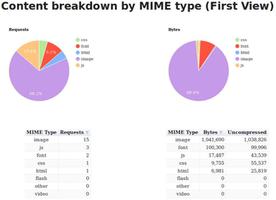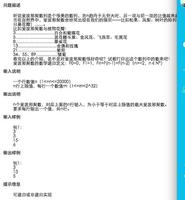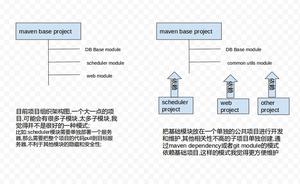树结构递归如何优化?

翻到祖师爷代码,发现树结构的数据是后端通过递归去生成的,效率非常低,请问有什么方法可以优化吗?
public List<Map> createGroupTreeNode() { List<Map> childrenList = new ArrayList<Map>();
getChildList(0L,childrenList);
List<Map> treeList = new ArrayList<Map>();
Map map = new HashMap();
map.put("id", 0);
map.put("text","根节点");
map.put("isleaf", "0");
map.put("icon", "fa fa-folder");
Map subMap = new HashMap();
subMap.put("opened", true);
subMap.put("selected", true);
map.put("state", subMap);
map.put("children", childrenList);
treeList.add(map);
return treeList;
}
public List<Map> getChildList(Long id,List<Map> childrenList){ List<BaseGroup> childList = baseMapper.childListByParentId(id);
if(childList != null && childList.size() > 0){
List<Map> tempMap = new ArrayList<Map>();
for(int i = 0; i < childList.size(); i++){
List<Map> mylist = getChildList(childList.get(i).getId(),childrenList);
Map map = new HashMap();
if(mylist == null){
map.put("id", childList.get(i).getId());
map.put("text", childList.get(i).getNumber() + " - " + childList.get(i).getName());
map.put("isleaf", "1");
map.put("icon", "fa fa-folder");
Map subMap = new HashMap();
subMap.put("opened", false);
map.put("state", subMap);
tempMap.add(map);
}else{
map.put("id", childList.get(i).getId());
map.put("text", childList.get(i).getNumber() + " - " + childList.get(i).getName());
map.put("isleaf", "0");
map.put("icon", "fa fa-folder");
map.put("children", mylist);
Map subMap = new HashMap();
subMap.put("opened", false);
map.put("state", subMap);
tempMap.add(map);
}
if(id == 0){
childrenList.add(map);
}
}
return tempMap;
}
return null;
}
回答:
getChildList 的 childrenList 看起来是个输出参数,这里只有在 id == 0L 的时候会把元素加到 childrenList 中去。所以这个输入参数只在 id == 0L 的时候会使用。既然 getChildList 会把找到的列表返回出去,那完全不需要这个输出参数,在 createGroupTreeNode 里直接使用它的返回值就好。
public List<Map> createGroupTreeNode() { List<Map> childrenList = getChildList(0L);
// ^^^^^^^^^^^^^^^^^^^^^^^^^^^^^^^^^^^^^^^^^ 不用初始化并作为输入参数传入,直接使用返回值就行
// ....
}
public List<Map> getChildList(Long id) {
// ^^^ 去掉 childrenList 参数
// ...
// if(id == 0){
// childrenList.add(map);
// }
// ^^^^^^^^^^^^^^^^^^^^^^^^^^^^^^^^^^^ 不需要了
}
总体来说,关于递归,就只有这一点问题。
然后在里面,for 循环中的循环变量 i 只有一个作用,就是 childList.get(i),频繁的去使用 childList.get(i) 肯定不如缓存一个变量效率高,所以可以改为
for (int i = 0; i < childList.size(); i++) { BaseGroup it = childList.get(i);
// 下面都用 it 代替 childList.get(i)
}
或者直接用增强 for 循环
for (BaseGroup it : childList) { // ...
}
另外在 for 循环中的 if 分支,比较一下发现只有一丁点区别,就是在处理 isleaf 和 children 的时候,所以可以把其他 .put 都提取出来,只处理有差异的部分
Map map = new HashMap();map.put("id", it.getId());
// ...
List<Map> mylist = getChildList(it.getId());
// ^^^ 这句话后移到使用它的地方,不需要提前去取
// ^^^^^^^^^^^^^^^^^^^^^^^^ 没要第二个参数了,前面说过
if (mylist == null) {
map.put("isleaf", "1");
}
else {
map.put("isleaf", "0");
map.put("children", mylist);
}
回答:
树状结构正确的处理方式是:使用缓存。
详细来说,初次使用的时候,用各种方法将树状结构生成出来,存为JSON格式的字符串。
后续直接读取这个JSON在前端渲染。
有人会说,如果数据更新了,那么这个缓存的就不能反映真实状况了。
所以,我们会先识别出影响树状结构源数据的所有入口,然后在入口触发这个JSON的更新。这样,就可以让JSON的更新不在每次访问的时候触发,可以减少频繁刷新导致的性能崩溃。
回答:
如果 baseMapper 是数据库查询的话的确性能会很差,但跟递归没关系。
可以一次性查询出数据库记录,在内存中递归组合。如果数据库记录较多,可以加path字段辅助查询收缩范围。
回答:
没看出哪里效率低
只是觉得这人应该去写php
以上是 树结构递归如何优化? 的全部内容, 来源链接: utcz.com/p/945119.html









